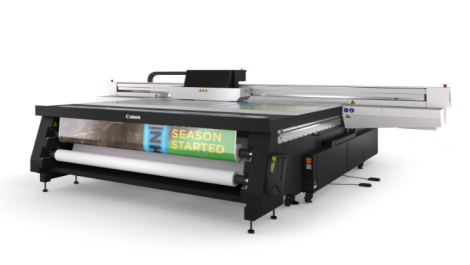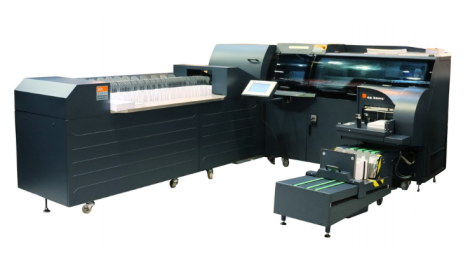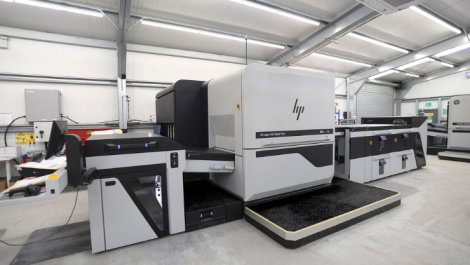Held in Leeds on 31 March 2015, the Visual Media Conference explored the shifting tides and blurred lines that characterise the relationships between today’s marketing communications channels.
Something is stirring in Yorkshire. A year on from the inaugural Visual Media Conference at The Rose Bowl in Leeds, CDi Yorkshire (formerly the BPIF’s CDi Print Yorkshire – a noteworthy name change itself) is gearing up for the second running of the event, and chief executive Robert McClements says he can detect a subtle change of mood in those he has discussed the conference programme with.
‘The biggest change is that the things which last year we were presenting as being at the forefront of thinking have become more accepted, and the reaction from the audience is “we are beginning to do it”. It looked futuristic, but it’s happening now and it will do more in the near future.
‘A phrase I’ve heard a few times is people saying “we get it, we understand what you are saying”. It’s about recognising that omni-channel is meaningful and that printers need to understand what brand owners want, digital agencies need to support their campaigns with print, packaging could be smarter and more interactive. It’s the split between the different applications that’s becoming interesting. People realise that they cannot use these things in isolation.’
Back in the June 2014 edition, Digital Printer magazine set out the stall of the Visual Media Conference as follows:
‘There was for many years a clear dividing line between the activities of a printing company, and those of an agency. They knew their places and they knew where demarcation began and ended. Not so in 2014.
‘A printing company today can be creative; it can be digital, it can design, it can lead the way. The world of marketing communications has opened up to such a company in ways that a matter of perhaps five years ago would have seemed impossible. The opportunity is there for print companies to go and grab.’

Stefan Casey, The Retail Institute
Fundamentally this remains the case today, said Mr McClements, but he is even more certain that the message is the correct one, and he sees these scenarios playing out more and more in the industry, with printers acting as a major player in sophisticated campaigns alongside digital agencies and brands.
‘What’s interesting is how people are managing the blurring of the lines, and that’s through more collaboration,’ he said. ‘I have been using these words for years but now digital agencies are working more and more with the printers. I can see partnerships developing between savvy printers that can deliver the back office while the digital agencies are working with brands on conceptual work and social media. They need someone working alongside them to cover the breadth of omni-channel marketing.’
All in the mind
The 2015 Visual Media Conference presented an eclectic mix of topics: brands, consumers and communication; the psychological impact of typography in design; multi-sensory print; interactive packaging; audience segmentation to allow personalisation; brand influence through social data; and insights into how the Printing Institute of California re-branded to embrace the broader communication industry.

Bruno Maag, Dalton Maag
Digital Printer put it to Mr McClements that one of the threads running through much of the content is a subtle, multi-level focus on the psychology of marketing communications. Is something profoundly different happening?
‘What’s happening is the awareness and understanding and the measured understanding of it is becoming more important. I’m a failed ad man and back then we would be looking at campaigns with viewing figures for TV and trying to measure the effectiveness. There was no thought, for example, about the effectiveness of packaging for consumer response. What’s happening is a professionalisation of other areas of advertising and marketing. It was once just TV and radio. Now it’s in interactive packaging, Google analytics, and many other areas. It’s the effectiveness of all types of marcomms.’
The conference programme was put together with the help of a steering committee that includes representatives from many of the constituencies that the Visual Media Conference is designed to appeal to – the printers, the digital agencies, the brands – as well as support from bodies such as the Leeds City Region Enterprise Partnership, UK Trade & Investment, and Superfast???, which is working to improve broadband links throughout Yorkshire. The CDi in CDi Yorkshire stands for Creative and Digital Industries, and Mr McClements’ feeling is that the region’s creative and digital potential is really starting to be recognised.
He continued: ‘There are more digital agencies in Leeds than in Manchester now and when you look at the support around that, it becomes an attractive proposition for inward investment. It feels like the thinking is beginning to be joined up. Digital agencies know their role in taking data and turning it into information, a company like HP (which is a partner to the event) understands that its role is not just selling machines that put ink on paper but selling communications equipment to help with variable data that links to campaigns. It feels more joined up this year.

Ian Schofield, Iceland Foods
‘I think that’s been a happy consequence of last year. It was always my aspiration. It’s still an eclectic mix and if you isolate each subject we are covering it becomes so niche as to be meaningless. Take printed electronics, for example: we’ve got a tin maker that wants to use printed electronics to interact with a printed poster via NFC. That then becomes interesting for the digital agencies. It’s a virtuous circle.’
The winning way
The Visual Media Conference has a new strapline this year: How to Win in the Media Market Place. There will be case studies and success stories shared that highlight printers doing exactly that. There will be speakers from the digital agencies Epiphany Search and Bloom, who happily admit, said Mr McClements, that their campaigns are founded on a bedrock of print.
‘If, as a printer, you are not working with a digital agency, you should be,’ he added. ‘Printers need to talk the same language as their customers; they need to understand that language so they can respond; and they need to understand the techniques because they should probably be using them to promote themselves. It’s all about learning from other people’s expertise, and with this group of speakers I think it will be quite exceptional.’
What messages does he hope attendees will take from the event? ‘That omni-channel is more than a buzzword. That people understand its component parts so that they can play a relevant part within their area of expertise, and understand the next element in the supply chain, both above and below where they are. And just to get it. This is no longer gimmicky. It is being used and it will be used more, so you need to understand where it is going to be in the future.’





